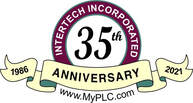Calculate the Cost and Benefits of Technical Education
A four-step process for measuring the savings that technical education provides and comparing it to the costs.
Source: Excepted from The Trainer's Tool Kit by Cy Charney & Kathy Conway. Copyright 2005 by Cy Charney & Kathy Conway. Published by AMACOM Books, a division of American Management Association, New York, NY.
"Only the educated are free." --Epictetus (Roman philosopher, slave and author of Discourses)
Most organizations would like to be able to measure the costs invested in education initiatives against anticipated results. The challenge is that it is far easier to measure the costs of conducting educational training than it is to quantify results. A useful tool in determining costs and savings is to compare costs per participant versus savings per participant.
Comparing costs and benefits can be done in the following four simple steps:
A four-step process for measuring the savings that technical education provides and comparing it to the costs.
Source: Excepted from The Trainer's Tool Kit by Cy Charney & Kathy Conway. Copyright 2005 by Cy Charney & Kathy Conway. Published by AMACOM Books, a division of American Management Association, New York, NY.
"Only the educated are free." --Epictetus (Roman philosopher, slave and author of Discourses)
Most organizations would like to be able to measure the costs invested in education initiatives against anticipated results. The challenge is that it is far easier to measure the costs of conducting educational training than it is to quantify results. A useful tool in determining costs and savings is to compare costs per participant versus savings per participant.
Comparing costs and benefits can be done in the following four simple steps:

1. Calculate the cost of Technical Education. This will include education costs such as:
• Facilitator fees
• Training design
• Course materials
• Videos and workbooks
• Facilities rental
• Equipment rentals (such as overhead projectors)
• Production downtime (including employee time off the job)
• Videoconferencing facilities
• Specialized computer equipment
• Administration (such as registration procedures or confirmation notices)
• All the relevant costs, divided by the anticipated number of participants, gives the cost per participant.

2. Determine the potential savings generated. These savings might include:
• Fewer errors
• Reduced customer turnover
• Less equipment downtime
• Increased revenue collection
• Faster equipment startup time
• Reduced employee turnover, when turnover is attributable to poor supervision
• Proper implementation of new customer strategies
• Higher workplace morale through more effective management practices
• Less time lost to grievance hearings and work stoppages because of ineffective supervision
• Reduced recruitment costs (because training can create more job-ready candidates for promotions)
• Maximized productivity of new employees through efficient orientation training
• Fewer errors
• Reduced customer turnover
• Less equipment downtime
• Increased revenue collection
• Faster equipment startup time
• Reduced employee turnover, when turnover is attributable to poor supervision
• Proper implementation of new customer strategies
• Higher workplace morale through more effective management practices
• Less time lost to grievance hearings and work stoppages because of ineffective supervision
• Reduced recruitment costs (because training can create more job-ready candidates for promotions)
• Maximized productivity of new employees through efficient orientation training

3. Calculate the potential savings. To calculate potential savings, set goals for post-training achievements by identifying and quantifying the changes in a training initiative will produce if all other factors are constant. The factors in the formula include the following:

• Current level of performance (for example, 200 error rates per month; six lost customer accounts per month; five days lost to work stoppages per year).
• Translate the current level of performance into a dollar figure (for example: 200 error rates x five minutes' correction time x $15 salary per hour = $250 per month expense).
• Identify the change that training & education can produce (for example, reduce errors to 50 per month).
• Calculate the savings that the target criteria will generate (for example: 200 errors - 50 errors = decrease of 150 errors per month. Equals: 150 errors x five minute correction / 60 minutes x $15 salary = $187.50 savings).
• Identify a meaningful time line for realizing savings, based on your best business predictions about factors contributing to errors remaining unchanged.
• Identify the number of employees in the target training group.
• Divide the total anticipated savings by the number of participants to identify the savings per participant.
• Translate the current level of performance into a dollar figure (for example: 200 error rates x five minutes' correction time x $15 salary per hour = $250 per month expense).
• Identify the change that training & education can produce (for example, reduce errors to 50 per month).
• Calculate the savings that the target criteria will generate (for example: 200 errors - 50 errors = decrease of 150 errors per month. Equals: 150 errors x five minute correction / 60 minutes x $15 salary = $187.50 savings).
• Identify a meaningful time line for realizing savings, based on your best business predictions about factors contributing to errors remaining unchanged.
• Identify the number of employees in the target training group.
• Divide the total anticipated savings by the number of participants to identify the savings per participant.
4. Compare the costs to savings.
• Multiply the cost per participant by the total number of participants.
• Multiply the savings per participant by the total number of participants.
• Compare your figures to establish your business case for training.
• Multiply the cost per participant by the total number of participants.
• Multiply the savings per participant by the total number of participants.
• Compare your figures to establish your business case for training.
This exercise not only identifies actual costs and realistic savings, but also ensures that your technical education expectations are reasonable and targeted to measurable business outcomes.
This exercise not only identifies actual costs and realistic savings, but also ensures that your technical education expectations are reasonable and targeted to measurable business outcomes.
allen-bradley / rockwell
modicon / schneider-electric
Legacy hardware / software COPYRIGHT © Intertech Incorporated 1986-2022. ALL RIGHTS RESERVED.
|




